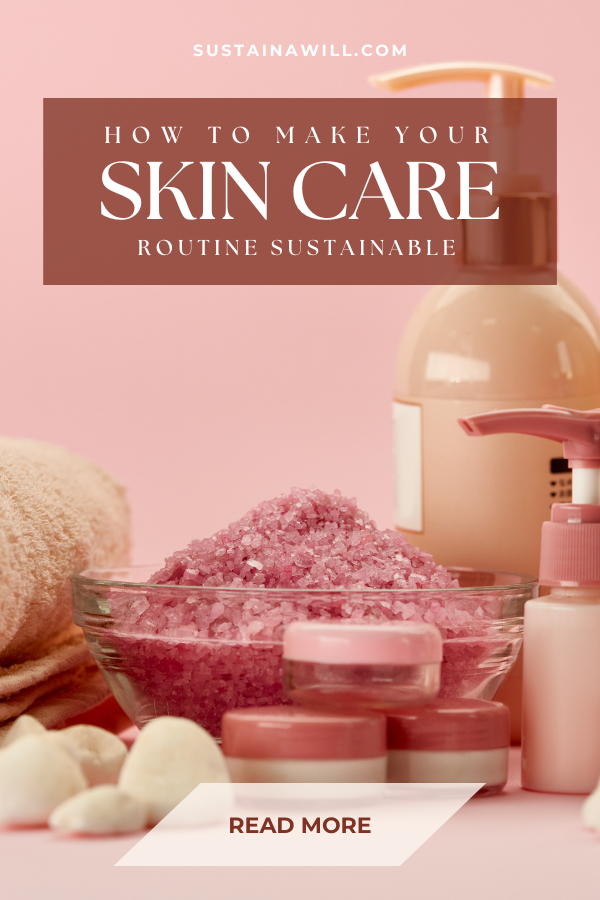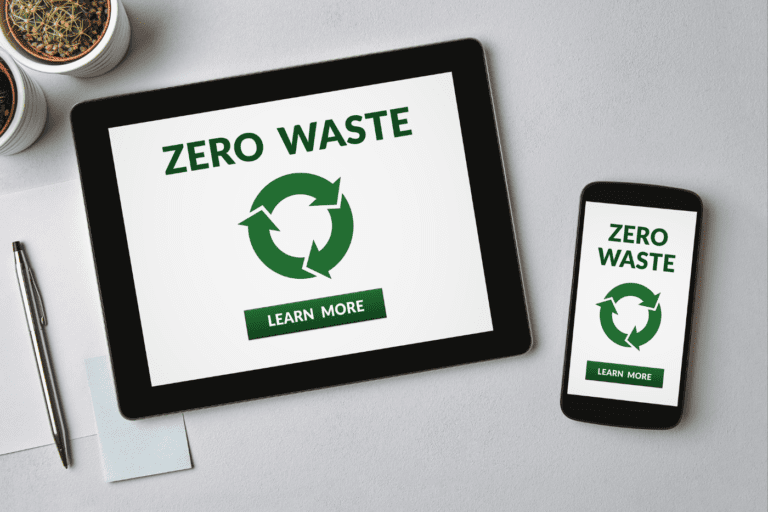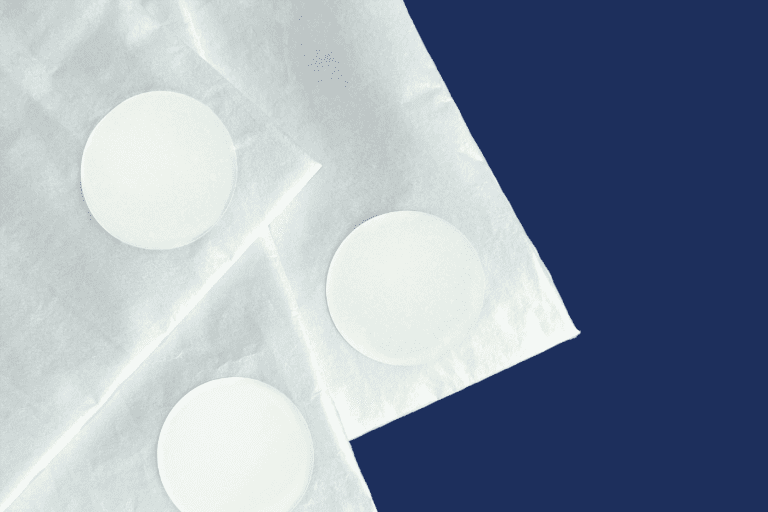In the quest for radiant skin, have you ever stopped to wonder about the environmental cost? The plastic waste from countless beauty products, the chemical footprint in your favourite lotions and potions—do these keep you up at night?
It’s time to let go of that guilt and embrace a skincare routine that not only loves your skin but also honors the Earth. Let’s rewrite this story, where every product choice becomes a vote for a sustainable future. 🌿✨
Why Should I Care About a Sustainable Skin Care Routine?
Read more in-depth info on this topic under HOW TO: MINIMIZE WASTE (ZERO WASTE LIVING GUIDE 2024) and WHAT IS SUSTAINABLE LIVING? EXPLAINED WITH 5 EASY EXAMPLES
Skincare is more than just a daily routine—it’s an opportunity to nurture both your skin and our precious planet.
Here’s why you should deeply care about making your skincare routine sustainable:
1. Protecting Our Fragile Ecosystems
- Why?: Skincare ingredients can end up in water systems, harming aquatic life and delicate ecosystems.
- Example: Picture your favorite face wash. When you wash it off, those chemicals can find their way into rivers and oceans, impacting the fish and plants that call these waters home.
2. Reducing Plastic Pollution
- Why?: The beauty industry contributes significantly to plastic waste, polluting our land and oceans.
- Example: Just think about all those skincare products packaged in plastic. If those bottles aren’t recycled properly, they become yet another piece of plastic choking our Earth.
3. Promoting Healthier Ingredients
- Why?: Conventional skincare often contains harmful chemicals that can cause skin irritation and have long-term health effects.
- Example: So many skincare products out there have ingredients that might be doing more harm than good, causing skin issues and potentially impacting our health.
4. Sustainable Sourcing and Fair Trade
- Why?: Many skincare ingredients are sourced from vulnerable communities, and fair trade practices ensure they receive a fair share.
- Example: Take shea butter, for instance. It’s a common skincare ingredient sourced from African countries. By choosing products that use ethically sourced shea butter, you help ensure the communities involved are treated fairly.
Caring for the environment while caring for your skin is a compassionate choice. By choosing sustainability in your skincare routine, you embrace a lifestyle that prioritizes both your well-being and the well-being of the planet.
Let’s embark on this journey of mindful skincare, where every product you choose is a testament to your love for your skin and our beautiful planet. 🌼🌎
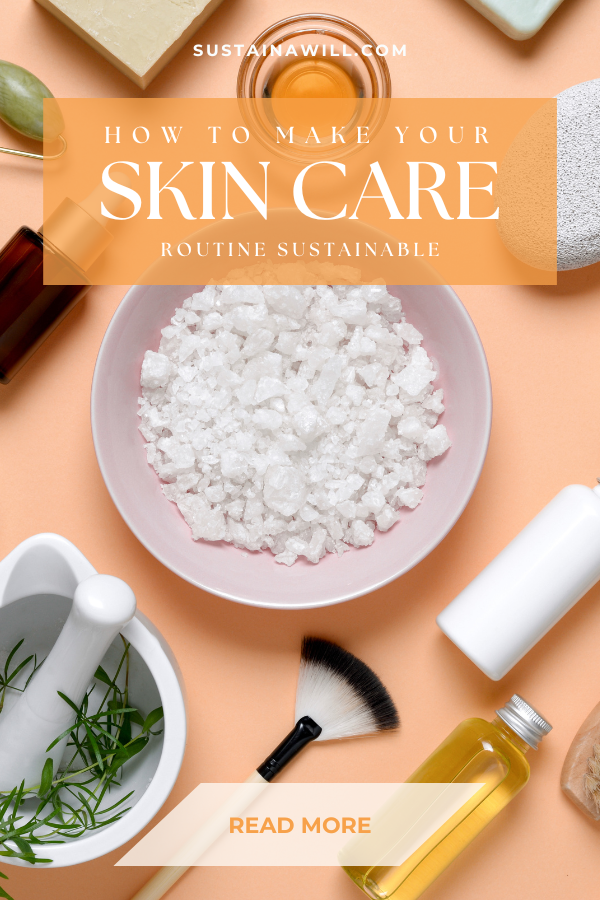
The 7 Easy Ways to Make Your Skin Care Routine More Sustainable
1. Choosing the Right Products

Navigating the world of skincare can be overwhelming, but fear not! We’re here to guide you toward products that not only nurture your skin but also nurture our beautiful planet.
What Key Criteria Define a Sustainable Skin Care Product?
1. Ingredients That Mother Nature Approves
- Why?: Natural and organic ingredients are gentle on your skin and kind to the environment.
- Example: Look for products with ingredients like aloe vera, tea tree oil, or shea butter—sourced sustainably and gently on your skin.
2. Minimal Packaging, Maximum Love
- Why?: Less packaging means less waste, contributing to a cleaner, greener Earth.
- Example: Opt for products with simple, recyclable packaging. Imagine a moisturizer in a sleek glass jar instead of a plastic container.
3. Cruelty-Free Beauty
- Why?: Opt for products that haven’t been tested on animals—compassion for all creatures, great and small.
- Example: Choose products proudly displaying a “cruelty-free” bunny logo. Imagine your face wash without any harm caused to our furry friends.
How Can You Identify Eco-Friendly Skin Care Brands?
- Look for Certifications: Brands with certifications like “Cruelty-Free,” “Certified Organic,” or “Fair Trade” are likely to prioritize sustainability.
- Check Their Packaging: Sustainable brands often use recyclable or biodegradable packaging, showing their commitment to reducing waste.
- Research Their Values: Visit their website to learn about their sustainability initiatives, sourcing practices, and overall commitment to the environment.
The Top 10 Sustainable Skin Care Brands
We know you love specifics, so here are ten amazing brands that wear their sustainability badge proudly:
- Burt’s Bees: Primarily known for their iconic lip balms. They are a pioneer in natural skincare, committed to eco-friendly packaging and responsible sourcing.
- Dr. Hauschka: Known for its holistic approach to skincare using natural, biodynamic ingredients.
- The Body Shop: A trailblazer in cruelty-free beauty with a strong focus on community trade and sustainability.
- Aveda: A brand deeply committed to cruelty-free, plant-based products and responsible sourcing.
- REN Clean Skincare: Pioneers in zero-waste packaging and a commitment to clean, natural ingredients.
- Lush: Renowned for its fresh, handmade cosmetics and advocacy against animal testing.
- Youth to the People: A brand focused on sustainability, using glass packaging and superfoods for your skin.
- Alaffia: Dedicated to ethical trade, using fair-trade, unrefined ingredients that are gentle on your skin and the environment.
- Indie Lee: Known for its eco-friendly packaging and natural, clean ingredients.
- Eminence Organic Skin Care: Committed to using sustainable farming and green practices in creating their organic products.
Choosing the right skincare products is an act of self-care that ripples out to care for the world. Let’s embrace this journey together, where every purchase becomes a vote for a sustainable, beautiful planet. 🌿💚
2. Understanding and Selecting Ingredients
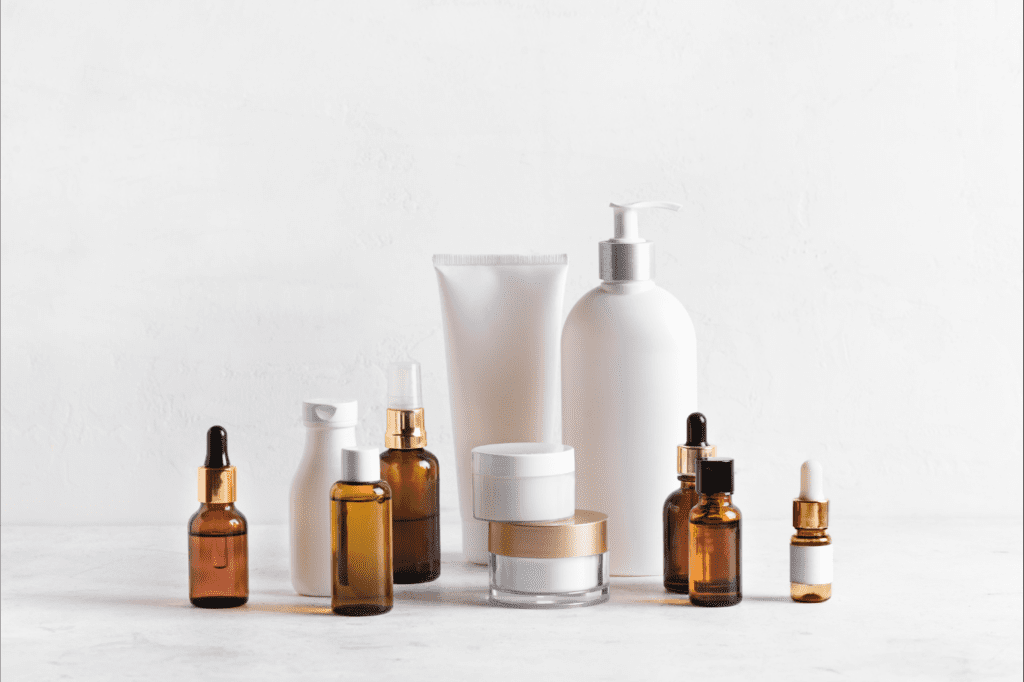
Which Ingredients Should You Look for in Sustainable Skin Care Products?
In the delightful realm of skincare, understanding the ingredients is like knowing the characters in a story. Let’s unravel this tale, where every component plays a crucial role in the wellness of your skin and our beloved Earth.
Common Sustainable Skin Care Ingredients:
1. Aloe Vera
- Why?: Known for its soothing and hydrating properties, aloe vera is often sustainably grown and minimally processed.
2. Jojoba Oil
- Why?: A sustainable choice, jojoba oil closely resembles our skin’s natural oils, making it a fantastic moisturizer.
3. Chamomile
- Why?: A gentle and calming herb often used for its anti-inflammatory and antioxidant properties.
4. Shea Butter
- Why?: Sustainably sourced from the shea tree nuts, it’s a rich moisturizer with excellent healing properties.
5. Argan Oil
- Why?: Harvested from the argan tree, this oil is rich in essential fatty acids and antioxidants, supporting skin health.
6. Calendula
- Why?: Often used for its soothing and skin-renewing properties, especially in sensitive skin products.
7. Green Tea Extract
- Why?: Packed with antioxidants, green tea extract helps protect the skin from environmental stressors.
8. Rosehip Oil
- Why?: Derived from rosehip seeds, this oil is rich in vitamins and essential fatty acids, great for skin rejuvenation.
9. Coconut Oil
- Why?: A versatile and sustainably sourced oil known for its moisturizing and antibacterial properties.
10. Hyaluronic Acid (plant-derived)
- Why?: A sustainable alternative to animal-derived hyaluronic acid, it helps retain skin moisture and elasticity.
5 Very Harmful Ingredients to Avoid in Your Skin Care
Understanding what to avoid is equally vital to curating a safe and sustainable skincare routine.
1. Parabens
- Why?: Parabens are synthetic preservatives linked to endocrine disruption and other health concerns.
2. Sulfates
- Why?: Sulfates, like SLS (Sodium Lauryl Sulfate), can cause skin irritation and may be contaminated with harmful byproducts.
3. Phthalates
- Why?: Phthalates, often hidden in “fragrance,” are associated with hormone disruption and potential harm to the reproductive system.
4. Formaldehyde
- Why?: Formaldehyde and formaldehyde-releasing preservatives can cause skin irritation and are classified as human carcinogens.
5. Polyethylene Glycols (PEGs)
- Why?: PEGs can be contaminated with harmful substances and may cause skin irritation and allergies.
Understanding what ingredients to seek is like deciphering a beautiful poem—it’s about finding the perfect harmony that sings to your skin and resonates with our wonderful planet. Let’s choose wisely, embracing ingredients that love both your skin and our incredible planet. 🌿✨
3. Efficiency in Routine

Efficiency in skincare is like finding the rhythm in a song—it’s about making every beat count. Let’s tune into this melody where a streamlined skincare routine not only cares for your skin but also dances to the beat of sustainability.
How Can You Optimize Your Routine for Sustainability?
1. Multi-Functional Products
- Why?: Using products that serve multiple purposes reduces consumption and waste.
2. Correct Product Dosage
- Why?: Applying the right amount of product ensures you’re not using excess, saving product and money.
3. Smart Packaging
- Why?: Opt for products with dispensers that control the amount of product released, preventing overuse.
4. Reusable Tools
- Why?: Choose reusable tools like cloth pads or silicone brushes instead of single-use items like cotton pads.
What Are the Benefits of a More Efficient Skin Care Routine?
Efficiency in skincare is a win-win scenario, both for you and the environment.
1. Time-Saving
- Why?: An efficient routine means less time spent on skincare, giving you more time for other activities.
2. Cost-Effective
- Why?: Using the right amount of product and choosing multi-functional options can save you money in the long run.
3. Reduced Environmental Impact
- Why?: Consuming less and optimizing product use means less waste, reducing your overall ecological footprint.
4. Minimalistic Lifestyle
- Why?: An efficient routine promotes a minimalist approach, simplifying your life and reducing clutter.
Efficiency in skincare is like a well-choreographed dance—it’s about making every movement count. Let’s embrace this graceful routine, where every step is in harmony with both your skin and our incredible planet. 🌿💃
4. Recycling and Upcycling
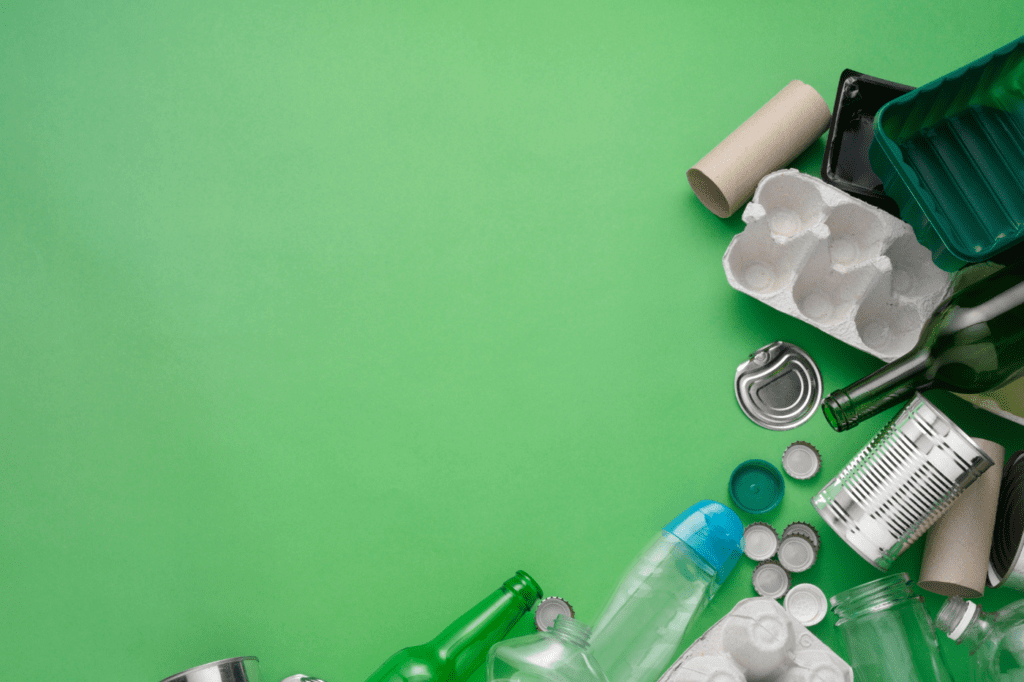
5 Useful Ways to Repurpose Skin Care Packaging
- Storage Containers: After finishing a moisturizer, clean and dry the jar thoroughly. Use it to store your stud earrings or rings. The small, lidded jars are perfect for keeping your jewelry organized and visible.
- DIY Planters: Take a clean empty skincare jar, place small rocks at the bottom for drainage, add soil, and plant a succulent or small herb. It not only adds greenery to your space but also reuses the packaging effectively.
- Candle Holders: Clean out a glass skincare jar, insert a tea light or a small candle, and light it up for a cozy ambiance. Decorate the exterior with paint or ribbon to match your decor style.
- Travel-Sized Toiletry Containers: Wash and refill smaller skincare containers with your preferred shampoo, conditioner, or face wash for your travels. It’s a convenient and eco-friendly way to carry your essentials.
- Art and Craft Projects: Get creative! Cut out colorful labels from the packaging and use them in a scrapbooking project. Turn bottle caps into magnets or keychain charms. Let your imagination run wild!
What’s the Proper Way to Recycle Skin Care Containers?
- Clean Thoroughly: After finishing a product, wash the container with warm water and mild soap to remove any residue. For tubes, cut them open and wash the interior.
- Check Local Recycling Guidelines: Check your local recycling guidelines to ensure you’re following the correct procedures. For instance, some areas may accept clean plastic containers, while others may not.
- Separate Materials: If possible, separate the container into its’ different materials, such as plastic, glass, or metal. This makes it easier for recycling centers to process.
- Dispose Responsibly: Place the clean, separated containers in the appropriate recycling bin or take them to a designated recycling drop-off point in your community.
- Consider Terracycle: If traditional recycling options are limited, look into services like Terracycle that offer specialized recycling for skincare packaging and other hard-to-recycle items.
Recycling and upcycling skincare packaging not only reduces waste but also offers creative and practical alternatives for everyday use. Let’s embrace these sustainable practices and contribute to a cleaner, greener planet! ♻️🌿
5. Creating DIY Skin Care
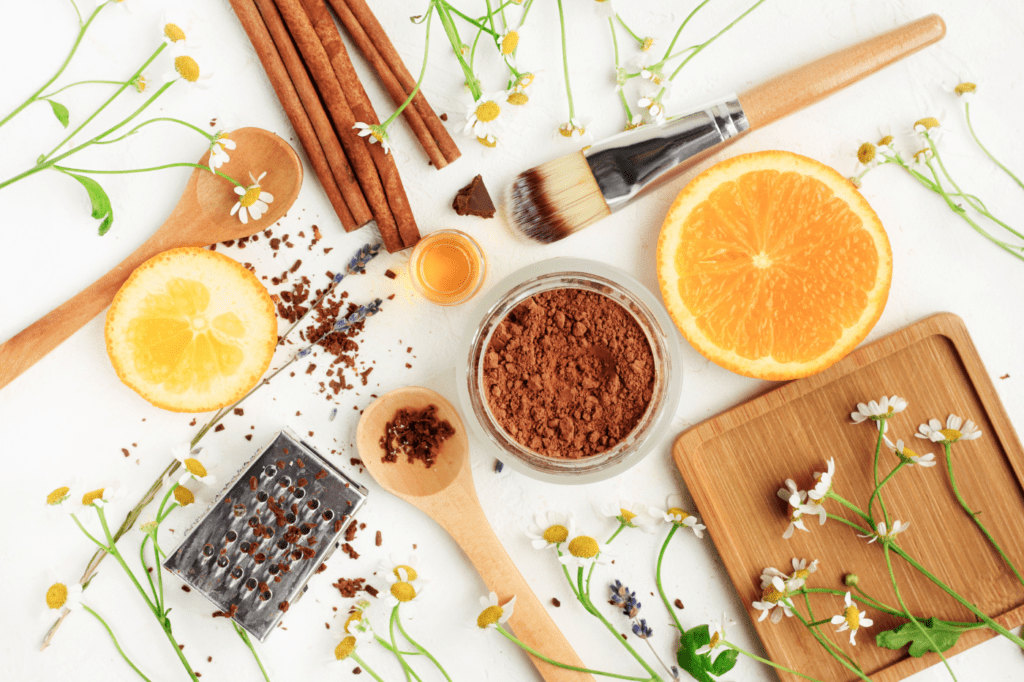
What Simple DIY Skin Care Recipes Can You Make at Home?
- Hydrating Face Mask:
- Ingredients: 1 ripe avocado, 1 tablespoon honey, 1 tablespoon yogurt.
- Instructions: Mash the avocado and mix in honey and yogurt. Apply to clean skin, leave for 15-20 minutes, then rinse for a refreshed, hydrated complexion.
- Exfoliating Sugar Scrub:
- Ingredients: 1/2 cup brown sugar, 1/4 cup coconut oil, and a few drops of your favorite essential oil (e.g., lavender or peppermint).
- Instructions: Mix the ingredients and gently scrub your face in a circular motion. Rinse for smooth, revitalized skin.
- Soothing Aloe Vera Gel:
- Ingredients: Fresh aloe vera leaf or store-bought aloe vera gel.
- Instructions: Extract the gel from the leaf or use store-bought aloe vera gel. Apply a thin layer to calm and moisturize your skin.
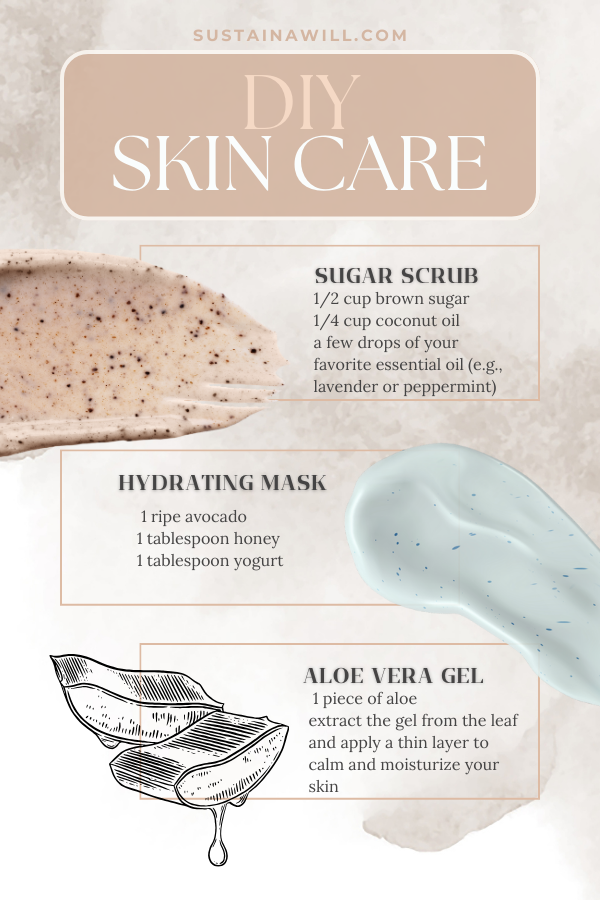
5 Ways You Can Utilize Everyday Ingredients for Homemade Treatments
- Honey: Mix honey with warm water and use it as a natural face cleanser. Its antibacterial properties help fight acne and moisturize the skin.
- Oats: Grind oats and mix with water to create a paste. Apply as a gentle exfoliating face mask to remove dead skin cells.
- Coconut Oil: Use coconut oil as a natural makeup remover or as a moisturizer for dry skin. Its anti-inflammatory properties can also help with skin irritation.
- Yogurt: Apply plain yogurt as a face mask to soothe the skin and even out the complexion. The lactic acid helps in gentle exfoliation.
- Lemon: Mix lemon juice with water and use it to brighten your skin. Be cautious if you have sensitive skin, as lemon can be strong. Always do a patch test.
Creating DIY skincare not only allows for a more personalized approach but also ensures you’re using natural, chemical-free ingredients. Let’s embrace the simplicity and effectiveness of homemade skincare for a radiant, healthy glow!
6. Reducing Water Waste
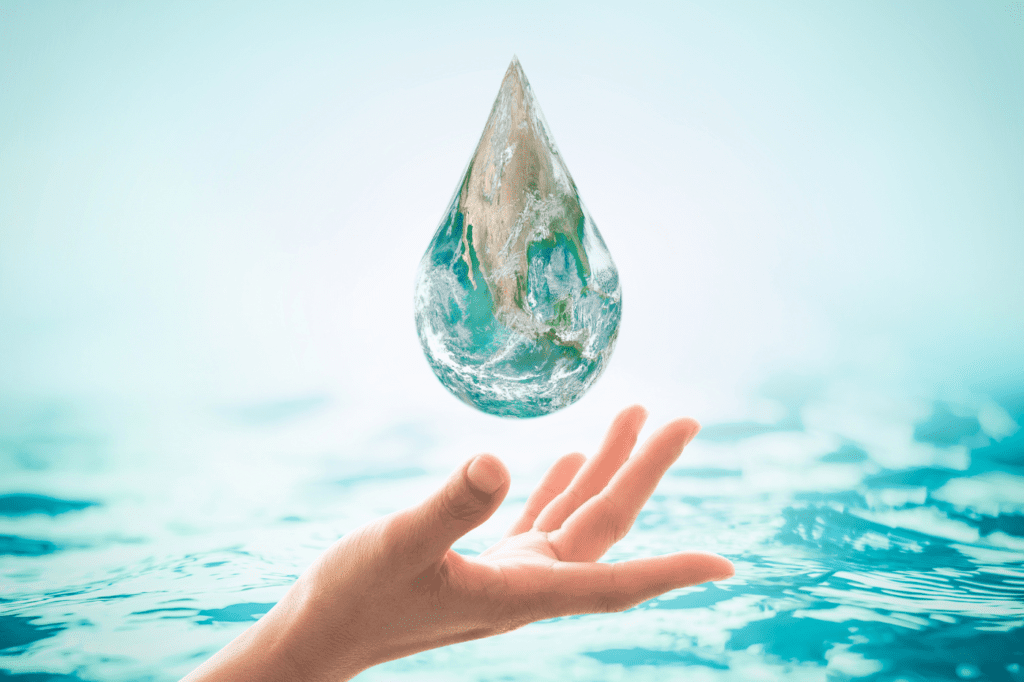
The 3 Behaviours That Cause The Most Water Waste in Your Routine (+ Tips for Change)
- Running Taps While Washing Hands or Face:
- Tip for Change: It’s a small act, but turning off the tap while lathering your hands or applying face wash can save so much water. Let’s make it a habit to be conscious of our water usage.
- Long Showers:
- Tip for Change: We all enjoy a relaxing shower, but let’s try setting a timer to limit our shower time. It’s a thoughtful step towards conserving water for our planet.
- Leaving Taps Running While Brushing Teeth:
- Tip for Change: How about wetting your toothbrush, turning off the tap, and then only turning it on when needed? Every drop saved makes a difference.
How Can You Reduce Water Waste in Your Skin Care Routine?
- Use a Spray Bottle for Toner Application:
- Rather than using cotton pads, which can waste a lot of product, consider misting your face lightly with a spray bottle when applying toner. Every drop counts!
- Opt for Waterless Cleansing Solutions:
- Waterless cleansers are gentle on your skin and kind to the environment. They efficiently cleanse without needing water, a beautiful choice for both your skin and the planet.
- Avoid Excessive Face Washing:
- Our skin needs care, but let’s be gentle. Overwashing can strip away natural oils. Twice a day is perfect; more isn’t always better.
- Turn Off the Tap During Face Washing:
- How about a small change? Wet your face, turn off the tap, apply cleanser, and then turn it back on for rinsing. It’s simple, yet it saves water.
- Be Mindful of Product Dispensing:
- Sometimes, a tiny amount is all we need. Start small, and add more if necessary. Let’s be mindful and use just what we need.
Conserving water is an act of love—for our planet, our communities, and ourselves. Let’s make these caring changes in our daily routines and watch the positive impact ripple around us.
7. Mindful Purchasing Habits

What Should You Consider Before Purchasing Sustainable Skin Care Products?
- Ingredients and Formulas:
- Example: Look for a face moisturizer with organic aloe vera, shea butter, and natural oils. These ingredients are sustainably sourced and nourishing for your skin.
- Packaging:
- Example: Choose a skincare brand that offers refill options for their products. For instance, “RenewSkin Co.” allows you to refill your moisturizer bottle at a discounted price, reducing overall packaging waste.
- Cruelty-Free and Ethical Brands:
- Example: Opt for cruelty-free brands like “Cruelty-Free Kitty” which provides a list of verified cruelty-free brands ensuring no animals were harmed during product testing.
- Certifications and Labels:
- Example: Seek products with labels such as “USDA Organic” or “Fair Trade Certified” on the packaging. These certifications ensure that the product meets specific sustainable and ethical standards.
- Local and Small-Scale Brands:
- Example: Choose to support a local artisanal soap maker who uses organic, locally sourced ingredients, reducing the environmental impact of long-distance transportation.
How Can You Shop Responsibly for Special Skin Care Needs?
- Consult a Dermatologist:
- Example: If you have sensitive skin, consult a dermatologist who can recommend hypoallergenic and gentle skincare products suitable for your skin type.
- Research Ingredients:
- Example: If you have acne-prone skin, look for products with ingredients like tea tree oil or salicylic acid known for their acne-fighting properties.
- Opt for Minimalism:
- Example: If you have a busy lifestyle, consider a 3-step skincare routine: cleanser, moisturizer, and sunscreen. This simplifies your routine while addressing your skin’s needs.
The 5 Top Tips for Budget-Friendly Skin Care Shopping
- Know Your Budget and Priorities:
- Example: Allocate $50 per month for skincare. Prioritize essentials like cleansers and moisturizers and allocate a smaller portion for occasional masks or serums.
- Look for Sales and Deals:
- Example: Keep an eye on seasonal sales. Buy your favorite cleanser or sunscreen in bulk when they’re on sale to save on the unit cost.
- Compare Prices and Read Reviews:
- Example: Before purchasing a specific brand of sunscreen, compare prices at various retailers. Read reviews to ensure it’s effective and suits your skin type.
- DIY Your Skin Care:
- Example: Make a simple DIY face mask using ingredients from your kitchen, like a honey and oatmeal mask. It’s cost-effective and gentle on your skin.
- Use Samples or Trial Sizes First:
- Example: Before committing to a full-size product, request free samples or trial sizes to test how the product works for your skin. This saves money in case the product doesn’t suit you.
Shopping for skincare can be both enjoyable and responsible. Let’s make informed choices that are kind to our skin, our budget, and our planet.
Bonus: Spreading Awareness

Why Is Educating Others About Sustainable Skin Care Important?
- Environmental Impact: When we educate others about sustainable skincare, we’re shedding light on how our choices affect our precious environment. Each decision, from ingredient sourcing to packaging, holds immense significance.
- Health and Well-being: Sustainable skincare promotes a natural, chemical-free approach that’s gentle on our skin, ultimately contributing to our overall health and well-being.
- Long-Term Change: Imagine the beautiful ripple effect of knowledge! The more people understand and embrace sustainable skincare, the more widespread positive change we can create. Every small step matters.
How Can You Encourage a Wider Adoption of Sustainable Beauty Habits?
- Lead by Example: Sharing your personal sustainable beauty routine, along with its positive impact, can be incredibly inspiring. People often follow the path shown by those they trust and admire.
- Educate through Social Media: Take to your social media platforms to spread awareness. Your authentic posts, articles, or videos can spark curiosity and initiate meaningful conversations about sustainable beauty.
- Organize Workshops or Events: Hosting events where people can learn, share, and experience sustainable beauty firsthand can foster a sense of community and encourage sustainable practices.
- Collaborate with Brands: Collaboration amplifies impact. Partner with sustainable beauty brands to co-create content or campaigns. Together, we can reach a broader audience and drive the message home.
FAQs: Everything You Wanted To Know About Sustainable Beauty
What Is Sustainable Beauty, and Why Does It Matter?
- Answer: Sustainable beauty is not just about looking good but feeling good about the products we use. It’s choosing skincare made responsibly, with ingredients that won’t harm our skin or our planet. It matters because it’s a step towards a healthier, more compassionate world.
Are Sustainable Beauty Products Effective?
- Answer: Absolutely. Sustainable beauty products are a blend of nature’s goodness and scientific innovation. They’re effective, often surpassing traditional products in delivering the desired results, all while being gentle and nurturing.
How Can I Dispose of Sustainable Beauty Packaging Responsibly?
- Answer: Responsible disposal is a caring step. Check if your local recycling program accepts the type of packaging. If not, get creative—upcycle or repurpose. Some brands also offer refill options, reducing the packaging footprint.
Conclusion
Let’s treat our skin and our planet with the love and care they deserve. Embracing sustainable skincare is an invitation to a beautiful journey of conscious choices, nurturing both ourselves and the world we live in.
Embrace the beauty of sustainability. Your choices today create a more beautiful tomorrow—for you, for our planet. 🌿🌎
